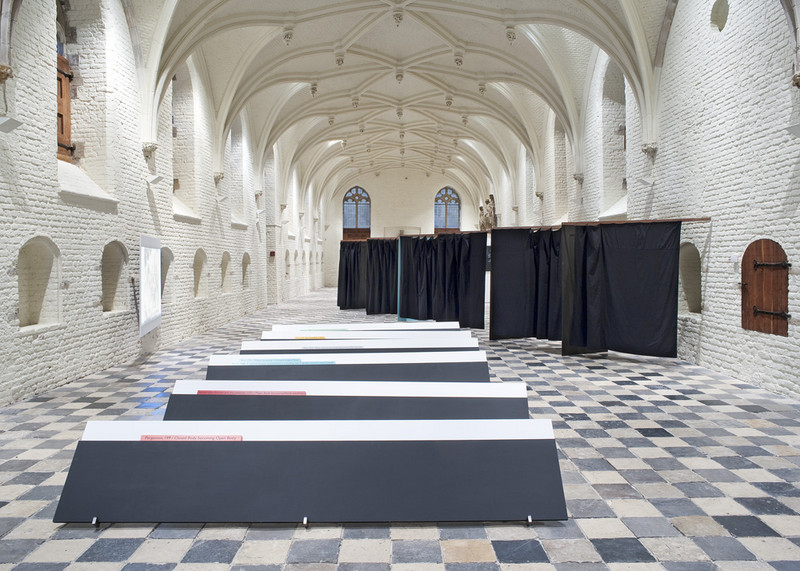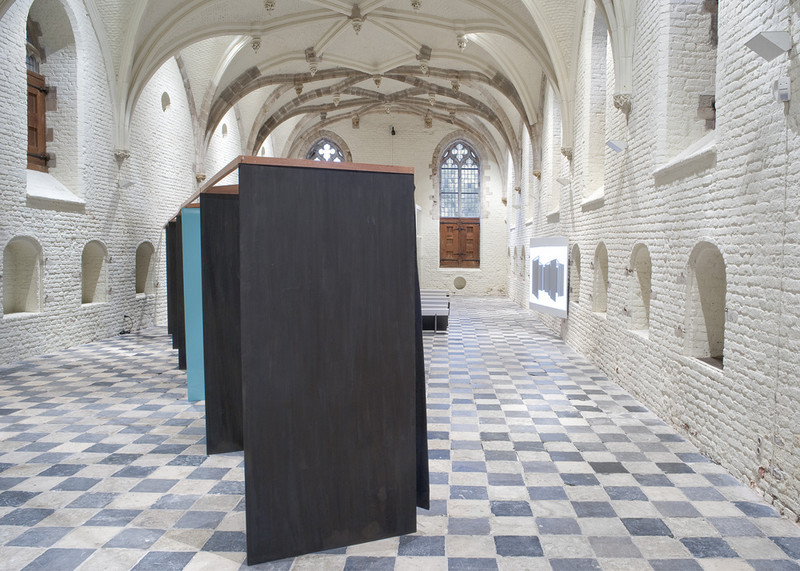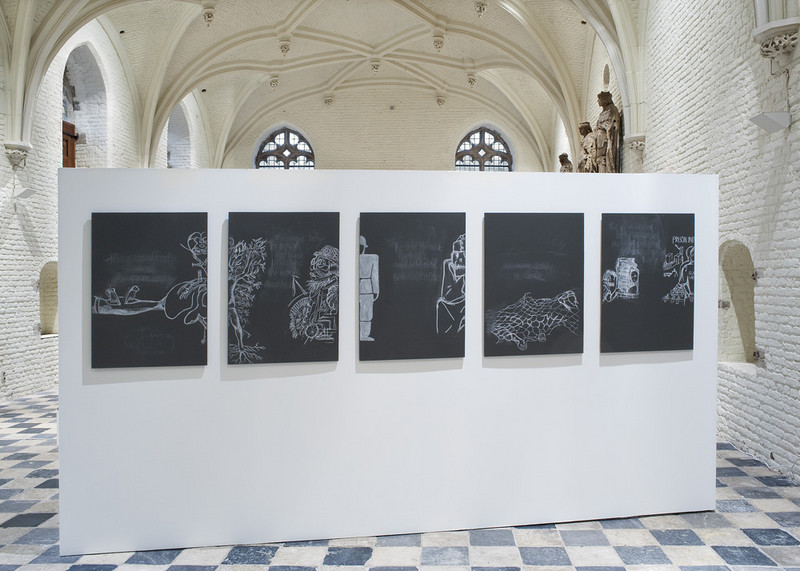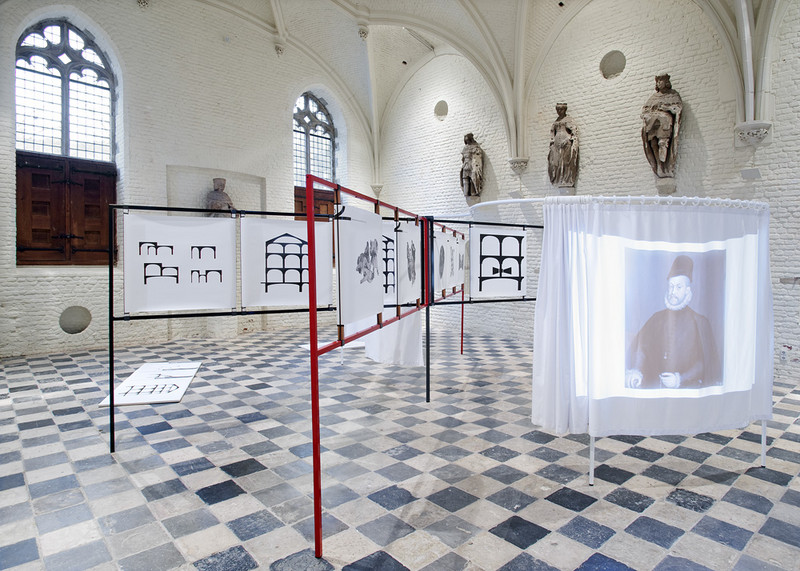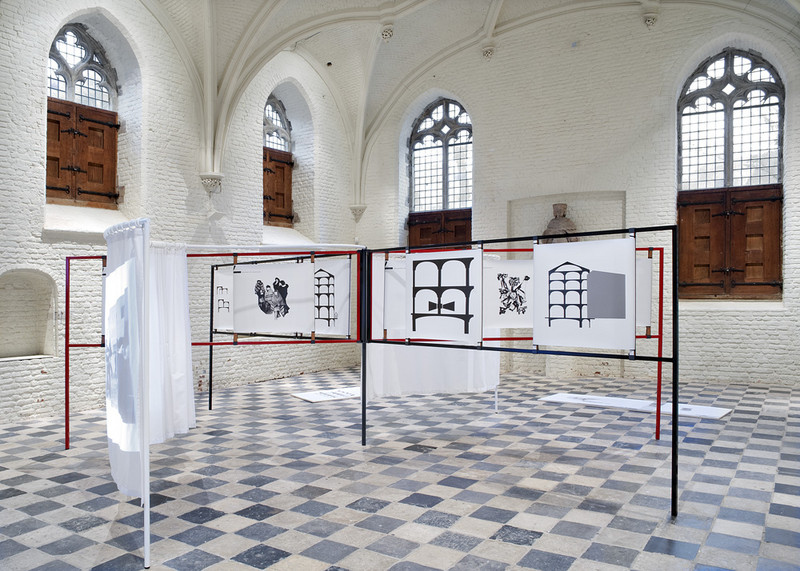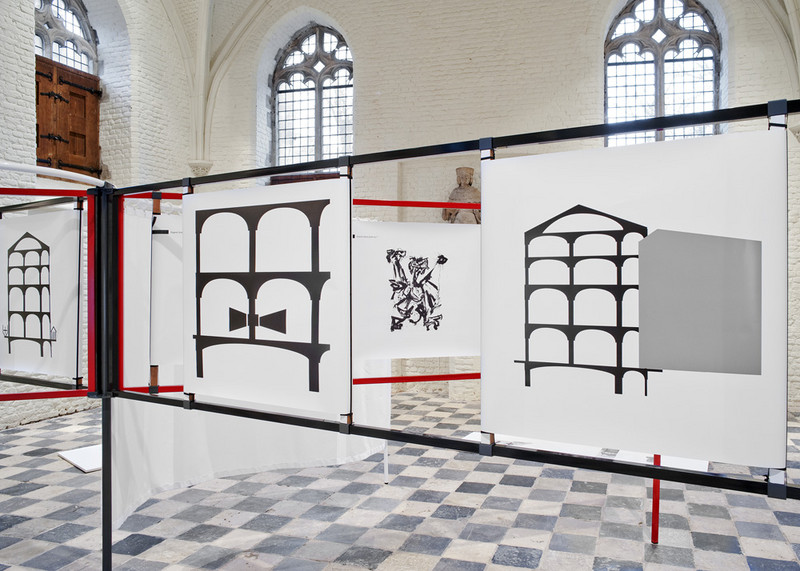Falke Pisano
01 Apr - 20 May 2012
FALKE PISANO
The Body in Crisis
1 April - 20 May 2012
Curator: Lorenzo Benedetti
From 1 April to 20 May the Middelburg Foundation for Visual Arts will present Falke Pisano’s exhibition The Body in Crisis at De Vleeshal. The exhibition will open at 5 p.m. on Saturday 31 March. This will be the artist’s first solo exhibition at an art institution in the Netherlands.
The Body in Crisis is a series of works in which Pisano explores how in the course of history representation has helped us perceive the constant state of crisis the body finds itself in owing to political and socioeconomic change. The exhibition at De Vleeshal comprises three sculptural installations and a number of videos that approach the topic from various angles, including the actual condition of the body (what are the forces that act upon it, and how does it respond to them?), the functioning of historical representations in their original contexts (who produced the work or illustration, for what purpose and with what audience in mind?) and the question of how such historical moments and their relevance to present-day conditions can be activated in contemporary art.
A series of low obstacles forms both an obstruction and a presentation system which Pisano uses to introduce six historical points of reference that recur in each of the works on display: six dates, six places and six events marking changes that left the body in crisis – for example the year 1915, when the first case of shell shock was reported from the trenches in France, and the year 1984, when the USA’s first privatised prison was opened in Houston by the Corrections Corporation of America.
The exhibition also includes six black panels that are partly concealed behind black curtains, forming a repetitive structure and interrupting the space and rhythm of De Vleeshal. The curtains suggest disruption of direct perception, but the images turn out to have been moved to a nearby wall with a sequence of physical transformations drawn on it in classroom chalk.
The notion of repetition and disrupted perception recurs in the video The Body in Crisis (Notes on Distance, Repetition and Representation). We see a series of images growing more and more distinct against a white background, until we can make out the situations they represent – a woman tied to a ladder being pushed towards a blazing fire, a gladiator being treated out of sight of the spectators in the amphitheatre, a soldier depicted as a skeleton and so on. We hear a voice-over describing these images and placing them in context – but then a black bar slides across, concealing them from view before they are entirely detached from their background.
This video makes clear that Pisano sees potential in giving the distance inherent in every representation (representation recreates the presence of something that is not there – if what is to be represented were there, there would be no need to represent it) concrete shape as an obstruction in the object-representation-subject triad. She uses repetition as a method (or strategy) for rendering this obstruction productive and creating the possibility of perception – a presence in the here and now – in the form of infinite, destabilising, transforming repetition.
From 2005 to 2010 Falke Pisano worked on the Figures of Speech project, part of which was displayed during the Autumn of modernism exhibition at De Vleeshal and De Kabinetten van De Vleeshal from 15 January to 18 March 2012.
The 2012 work The Body in Crisis (Housing, Treating and Depicting) was commissioned and co-produced by the Museo Nacional Centro de Arte Reina Sofía in Madrid, with support from the Dutch embassy in Madrid.
Born in Amsterdam in 1978, Falke Pisano lives and works in Berlin. She is represented by Ellen de Bruijne Projects in Amsterdam, Balice Hertling in Paris and Hollybush Gardens in London.
The Body in Crisis
1 April - 20 May 2012
Curator: Lorenzo Benedetti
From 1 April to 20 May the Middelburg Foundation for Visual Arts will present Falke Pisano’s exhibition The Body in Crisis at De Vleeshal. The exhibition will open at 5 p.m. on Saturday 31 March. This will be the artist’s first solo exhibition at an art institution in the Netherlands.
The Body in Crisis is a series of works in which Pisano explores how in the course of history representation has helped us perceive the constant state of crisis the body finds itself in owing to political and socioeconomic change. The exhibition at De Vleeshal comprises three sculptural installations and a number of videos that approach the topic from various angles, including the actual condition of the body (what are the forces that act upon it, and how does it respond to them?), the functioning of historical representations in their original contexts (who produced the work or illustration, for what purpose and with what audience in mind?) and the question of how such historical moments and their relevance to present-day conditions can be activated in contemporary art.
A series of low obstacles forms both an obstruction and a presentation system which Pisano uses to introduce six historical points of reference that recur in each of the works on display: six dates, six places and six events marking changes that left the body in crisis – for example the year 1915, when the first case of shell shock was reported from the trenches in France, and the year 1984, when the USA’s first privatised prison was opened in Houston by the Corrections Corporation of America.
The exhibition also includes six black panels that are partly concealed behind black curtains, forming a repetitive structure and interrupting the space and rhythm of De Vleeshal. The curtains suggest disruption of direct perception, but the images turn out to have been moved to a nearby wall with a sequence of physical transformations drawn on it in classroom chalk.
The notion of repetition and disrupted perception recurs in the video The Body in Crisis (Notes on Distance, Repetition and Representation). We see a series of images growing more and more distinct against a white background, until we can make out the situations they represent – a woman tied to a ladder being pushed towards a blazing fire, a gladiator being treated out of sight of the spectators in the amphitheatre, a soldier depicted as a skeleton and so on. We hear a voice-over describing these images and placing them in context – but then a black bar slides across, concealing them from view before they are entirely detached from their background.
This video makes clear that Pisano sees potential in giving the distance inherent in every representation (representation recreates the presence of something that is not there – if what is to be represented were there, there would be no need to represent it) concrete shape as an obstruction in the object-representation-subject triad. She uses repetition as a method (or strategy) for rendering this obstruction productive and creating the possibility of perception – a presence in the here and now – in the form of infinite, destabilising, transforming repetition.
From 2005 to 2010 Falke Pisano worked on the Figures of Speech project, part of which was displayed during the Autumn of modernism exhibition at De Vleeshal and De Kabinetten van De Vleeshal from 15 January to 18 March 2012.
The 2012 work The Body in Crisis (Housing, Treating and Depicting) was commissioned and co-produced by the Museo Nacional Centro de Arte Reina Sofía in Madrid, with support from the Dutch embassy in Madrid.
Born in Amsterdam in 1978, Falke Pisano lives and works in Berlin. She is represented by Ellen de Bruijne Projects in Amsterdam, Balice Hertling in Paris and Hollybush Gardens in London.

